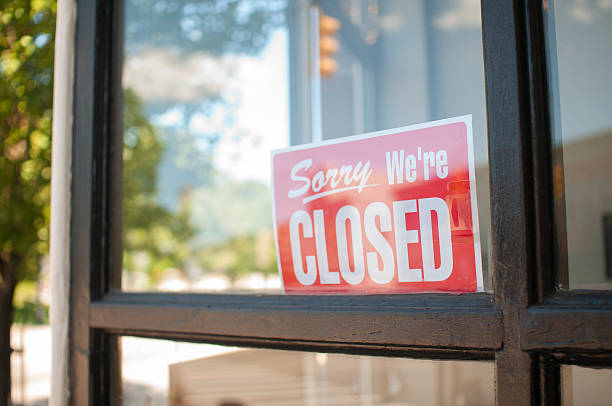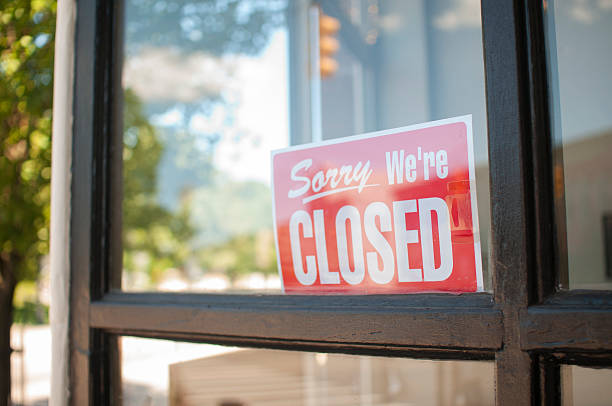
Winding up a Limited Company
What Does Winding up a Limited Company Mean?
Company winding up, also known as liquidation, means to formally close a company by selling the assets. This process is initiated either voluntarily by the company’s directors or compulsorily by the creditors through legal proceedings.
The primary objective of any winding up is to dismantle the company’s structure, settle all its debts, and distribute any remaining assets to the shareholders or creditors. The process differs significantly depending on the financial health of the company at the time of winding up.
I’ll outline the various methods available below, depending on the current financial state of your company.
What is Voluntary Dissolution?
Voluntary dissolution is the most straightforward method by which directors can close down a solvent company with no outstanding debts or that can settle its debts in full.
It’s a process typically chosen when a company is no longer needed, such as when the directors wish to retire or if the business has fulfilled its purpose. It involves formally ceasing business operations and removing the company from the Companies House register.
This method is often seen as an appealing option due to its simplicity and lower costs compared to more complex liquidation procedures. However, it’s crucial that all financial obligations are met before proceeding with this option to avoid legal complications or financial liabilities arising from unresolved debts.
The Process of Voluntary Dissolution
The process of voluntarily dissolving a company in the UK begins with the directors ensuring that the company has either no debts or can meet its liabilities within 12 months. Following this, a decision is made to cease operations and the directors must complete and submit Form DS01 to Companies House to apply for striking off the company’s registration.
Before submitting the form, the company must settle all legal obligations, including paying taxes, clearing debts, and distributing any remaining assets to shareholders. It is crucial that the company also informs all interested parties, such as creditors, employees, and customers, about the intended dissolution. This notification is a legal requirement to ensure transparency and to give any creditors the opportunity to claim any outstanding debts.
Once the form is filed, there is a statutory waiting period of three months, during which any objections to the dissolution can be raised. If no objections are presented, the company is formally dissolved and ceases to exist.
Members’ Voluntary Liquidation (MVL)
Members’ Voluntary Liquidation (MVL) is a procedure reserved for solvent companies where the directors have assessed and declared that the company can pay its debts in full within 12 months. This declaration, known as the Declaration of Solvency, includes a statement of the company’s assets and liabilities and must be sworn in front of a solicitor or notary public.
The process is detailed under sections 89 to 91 of the Insolvency Act 1986, which ensures that it is conducted under strict legal standards to protect the interests of creditors and shareholders.
MVL Process
Once the Declaration of Solvency is made, the company must convene a general meeting of the shareholders to pass a resolution for voluntary winding up. This requires a 75% majority vote in favour of the resolution.
Following the shareholders’ approval, a licensed insolvency practitioner is appointed as the liquidator to oversee the process. The liquidator’s duties include collecting and liquidating company assets, settling any debts, and distributing the remaining funds to shareholders according to their shareholdings.
Creditors’ Voluntary Liquidation (CVL)
Creditors’ Voluntary Liquidation (CVL) is a procedure initiated by the directors of a company when it becomes clear that the business is insolvent and unable to meet its financial obligations as they fall due. This process is governed by sections 100 to 101 of the Insolvency Act 1986, which outlines the steps that must be followed to ensure fairness and transparency to creditors.
CVL Process
The process begins with a board meeting where the directors resolve that the company should cease trading and be liquidated. This resolution is then presented at a meeting of shareholders, where at least 75% (by value) must vote in favour of winding up.
Following shareholder approval, a meeting with the creditors is scheduled to inform them of the decision.
At the creditors’ meeting, a licensed insolvency practitioner is appointed as the liquidator. The appointment can be proposed by the directors but must be approved by the creditors. This practitioner’s role is pivotal in managing the liquidation process, selling off assets, and distributing the proceeds among the creditors according to statutory priorities.
Compulsory Liquidation
Compulsory Liquidation, also known as compulsory winding up, occurs when a company is legally forced to cease operations and dissolve due to an inability to meet its debts. This process is typically initiated by creditors but can also be instigated by the company’s directors, shareholders, or other interested parties such as trade creditors, suppliers, or the HM Revenue and Customs (HMRC) if taxes remain unpaid.
The procedure is governed by the Insolvency Act 1986, particularly under sections 122 to 125, which set out the grounds and process for a compulsory winding up order issued by the court.
Compulsory Liquidation Process
This form of liquidation begins with the presentation of a winding up petition to the court. If the court finds the company unable to pay its debts, it will issue a winding up order, leading to the appointment of an Official Receiver or a licensed insolvency practitioner to oversee the liquidation process.
The appointed liquidator’s role in compulsory liquidation is primarily to liquidate all assets, settle all claims by creditors, and distribute any remaining assets according to the priorities established by law.
Expert Winding up Advice
If you need help understanding the best course of action for your company, we’re here to help. Our experienced team has helped thousands of directors successfully navigate difficult financial circumstances.
During working hours, you can reach out to us via live chat for immediate assistance. Alternatively, feel free to call us on 0800 074 6757 to speak directly with one of our experts.
FAQs on Winding up a Limited Company
What are the first steps to take if I’m considering winding up my limited company?
- Review Financial Status: Assess your company’s financial health to determine which form of liquidation is applicable (solvent or insolvent).
- Seek Professional Advice: Consult with an accountant or insolvency practitioner to understand the legal and financial implications.
- Inform Stakeholders: Discuss potential plans with all stakeholders, including directors, shareholders, and creditors.
Can winding up a company be reversed once it has started?
Once the winding-up process has begun, particularly after a liquidator is appointed, reversing the process is generally not possible. Decisions made during the winding-up process are typically final, emphasizing the importance of careful consideration and consultation with legal and financial advisors before initiating the process.








